Dacia Sandero vs Ford Puma - Differences and prices compared
Costs and Efficiency:
Price and efficiency are key factors when choosing a car – and this is often where the real differences emerge.
Dacia Sandero has a decisively advantage in terms of price – it starts at 10700 £, while the Ford Puma costs 24800 £. That’s a price difference of around 14066 £.
Fuel consumption also shows a difference: Dacia Sandero manages with 5.30 L and is therefore minimal more efficient than the Ford Puma with 5.40 L. The difference is about 0.10 L per 100 km.
Engine and Performance:
Under the bonnet, it becomes clear which model is tuned for sportiness and which one takes the lead when you hit the accelerator.
When it comes to engine power, the Ford Puma has a noticeable edge – offering 168 HP compared to 110 HP. That’s roughly 58 HP more horsepower.
In acceleration from 0 to 100 km/h, the Ford Puma is clearly perceptible quicker – completing the sprint in 7.40 s, while the Dacia Sandero takes 10 s. That’s about 2.60 s faster.
In terms of top speed, the Ford Puma performs somewhat better – reaching 210 km/h, while the Dacia Sandero tops out at 183 km/h. The difference is around 27 km/h.
There’s also a difference in torque: Ford Puma pulls noticeable stronger with 290 Nm compared to 200 Nm. That’s about 90 Nm difference.
Space and Everyday Use:
Whether family car or daily driver – which one offers more room, flexibility and comfort?
Seats: offers more seating capacity – vs .
In curb weight, Dacia Sandero is noticeable lighter – 1089 kg compared to 1316 kg. The difference is around 227 kg.
In terms of boot space, the Ford Puma offers noticeable more room – 523 L compared to 328 L. That’s a difference of about 195 L.
In maximum load capacity, the Ford Puma performs a bit better – up to 1283 L, which is about 175 L more than the Dacia Sandero.
When it comes to payload, Ford Puma minimal takes the win – 469 kg compared to 436 kg. That’s a difference of about 33 kg.
Who wins the race?
The Ford Puma proves to be leaves the rival little chance and therefore becomes our DriveDuel Champion!
Ford Puma is the better all-rounder in this comparison.
 @ Ford Motor Company / Ford Media Center
@ Ford Motor Company / Ford Media Center
Ford Puma
Costs and Consumption
View detailed analysis
Engine and Performance
View detailed analysis
Dimensions and Body
View detailed analysis
Dacia Sandero
The Dacia Sandero is the everyman's hatchback — unpretentious, practical and brilliantly affordable, with sensible space and straightforward charm where it matters most. It won't wow in the premium lane, but for buyers who want honest, dependable transport without showroom theatrics, the Sandero is a clever, no‑nonsense pick that keeps running costs low and grin levels high.
details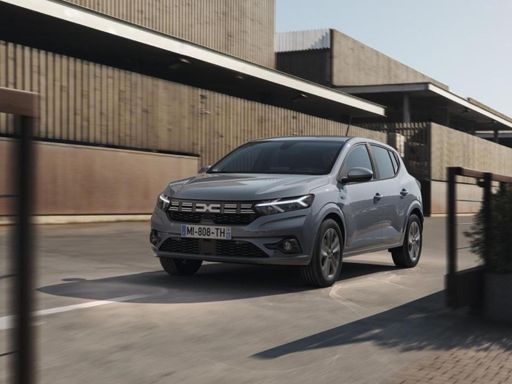 @ Dacia / Renault Group Media
@ Dacia / Renault Group Media
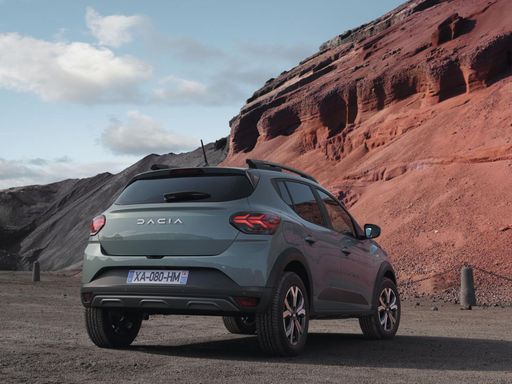 @ Dacia / Renault Group Media
@ Dacia / Renault Group Media
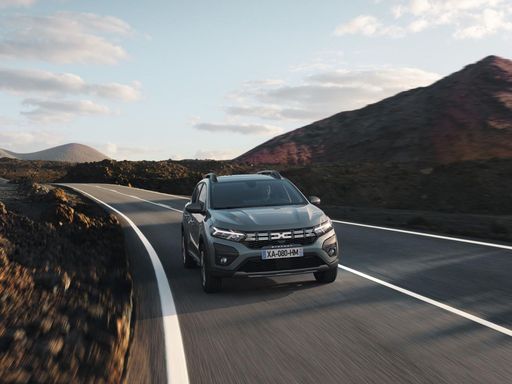 @ Dacia / Renault Group Media
@ Dacia / Renault Group Media
Ford Puma
The Ford Puma is a cheeky compact crossover that blends sporty styling with city-friendly practicality, giving drivers a surprisingly fun and composed ride. With clever storage tricks and a lively personality, it’s a smart pick for buyers who want enjoyment without fuss.
details @ Ford Motor Company / Ford Media Center
@ Ford Motor Company / Ford Media Center
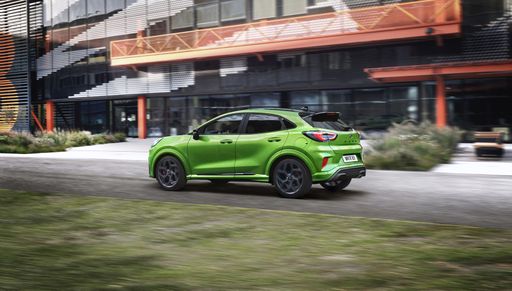 @ Ford Motor Company / Ford Media Center
@ Ford Motor Company / Ford Media Center
 @ Ford Motor Company / Ford Media Center
@ Ford Motor Company / Ford Media Center
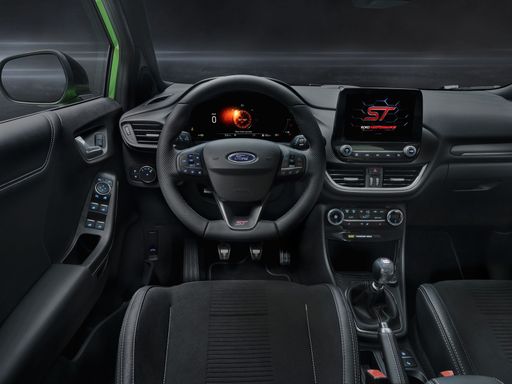 @ Ford Motor Company / Ford Media Center
@ Ford Motor Company / Ford Media Center
 @ Dacia / Renault Group Media
@ Dacia / Renault Group Media
|
 @ Ford Motor Company / Ford Media Center
@ Ford Motor Company / Ford Media Center
|
|
|
|
Costs and Consumption |
|
|---|---|
|
Price
10700 - 16700 £
|
Price
24800 - 36300 £
|
|
Consumption L/100km
5.3 - 7.1 L
|
Consumption L/100km
5.4 - 5.9 L
|
|
Consumption kWh/100km
-
|
Consumption kWh/100km
13.1 - 13.9 kWh
|
|
Electric Range
-
|
Electric Range
361 - 376 km
|
|
Battery Capacity
-
|
Battery Capacity
43 kWh
|
|
co2
105 - 140 g/km
|
co2
0 - 135 g/km
|
|
Fuel tank capacity
32 - 50 L
|
Fuel tank capacity
42 L
|
Dimensions and Body |
|
|---|---|
|
Body Type
Hatchback
|
Body Type
SUV
|
|
Seats
5
|
Seats
5
|
|
Doors
5
|
Doors
5
|
|
Curb weight
1089 - 1209 kg
|
Curb weight
1316 - 1563 kg
|
|
Trunk capacity
328 L
|
Trunk capacity
456 - 523 L
|
|
Length
4088 - 4099 mm
|
Length
4186 - 4226 mm
|
|
Width
1848 mm
|
Width
1805 mm
|
|
Height
1499 - 1535 mm
|
Height
1550 - 1555 mm
|
|
Max trunk capacity
1108 L
|
Max trunk capacity
1216 - 1283 L
|
|
Payload
404 - 436 kg
|
Payload
367 - 469 kg
|
Engine and Performance |
|
|---|---|
|
Engine Type
Petrol, LPG
|
Engine Type
Electric, Petrol MHEV
|
|
Transmission
Manuel, Automatic
|
Transmission
Automatic, Manuel
|
|
Transmission Detail
Manual Gearbox, CVT
|
Transmission Detail
Reduction Gearbox, Manual Gearbox, Dual-Clutch Automatic
|
|
Drive Type
Front-Wheel Drive
|
Drive Type
Front-Wheel Drive
|
|
Power HP
67 - 110 HP
|
Power HP
125 - 168 HP
|
|
Acceleration 0-100km/h
10 - 16.7 s
|
Acceleration 0-100km/h
7.4 - 9.8 s
|
|
Max Speed
158 - 183 km/h
|
Max Speed
160 - 210 km/h
|
|
Torque
95 - 200 Nm
|
Torque
170 - 290 Nm
|
|
Number of Cylinders
3
|
Number of Cylinders
3
|
|
Power kW
49 - 81 kW
|
Power kW
92 - 124 kW
|
|
Engine capacity
999 cm3
|
Engine capacity
999 cm3
|
General |
|
|---|---|
|
Model Year
2024 - 2025
|
Model Year
2025
|
|
CO2 Efficiency Class
D, C, E
|
CO2 Efficiency Class
A, D
|
|
Brand
Dacia
|
Brand
Ford
|
What drive types are available for the Dacia Sandero?
The Dacia Sandero is available as Front-Wheel Drive.
The prices and data displayed are estimates based on German list prices and may vary by country. This information is not legally binding.
